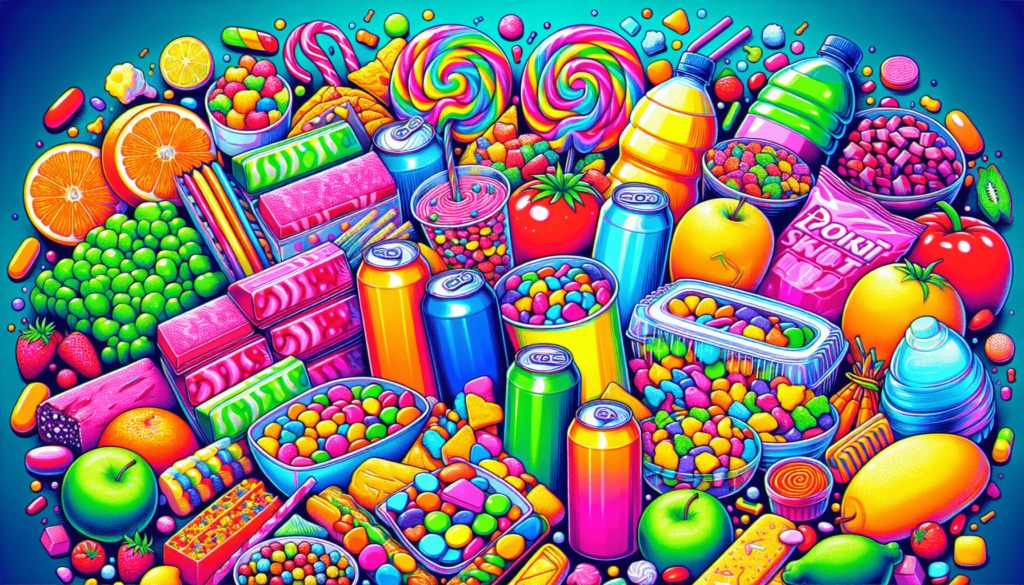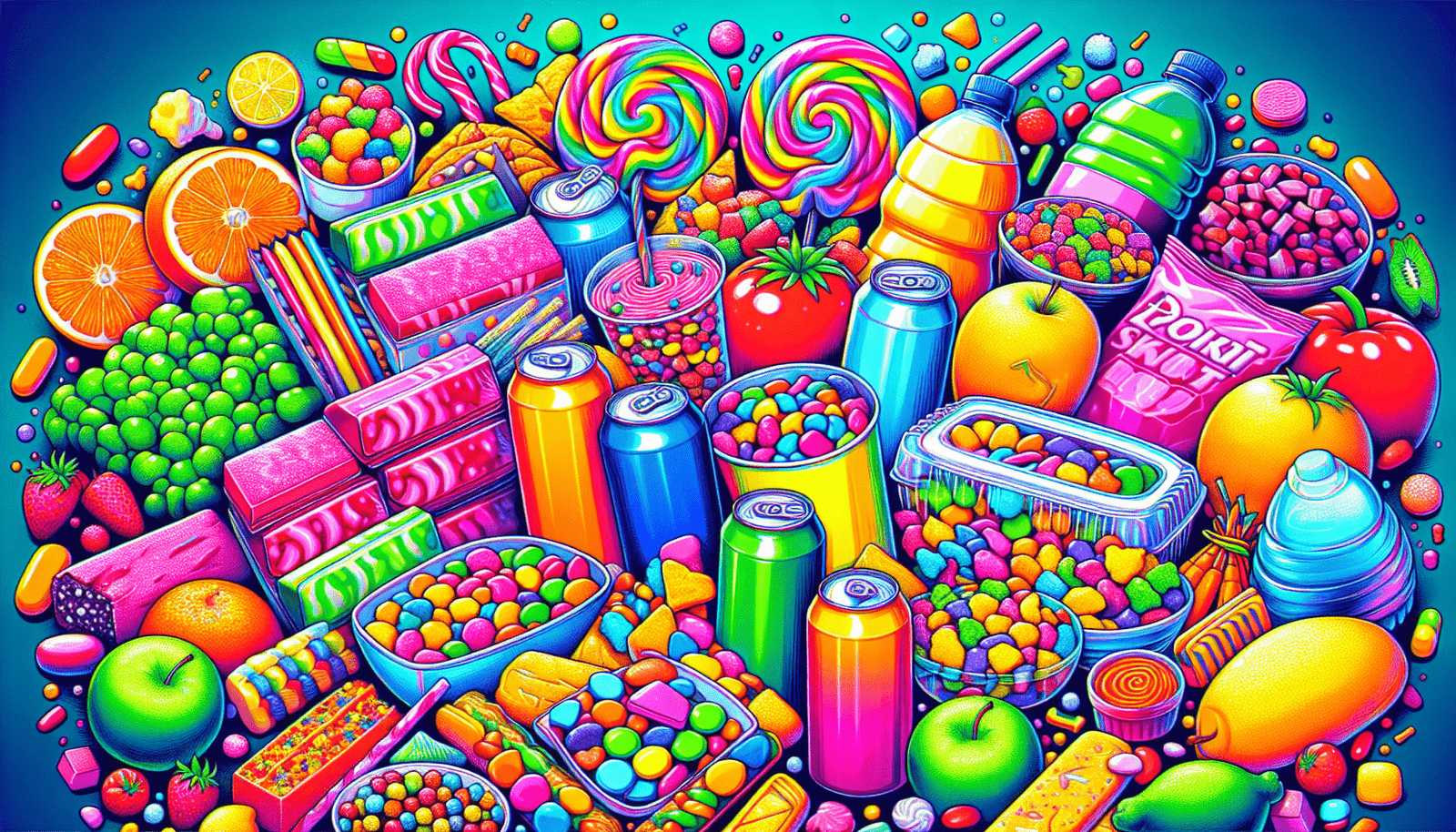Have you ever wondered about the impact of artificial colors and preservatives in the food you consume every day? It’s important to be informed about the ingredients in your food and how they can affect your health. Let’s explore the facts about artificial colors and preservatives together.
Understanding Artificial Colors
Artificial colors are synthetic dyes that are added to food and beverages to enhance their visual appeal. These colors are used to make products look more attractive and appealing to consumers. However, many artificial colors have been linked to various health concerns. It’s essential to understand the different types of artificial colors and their potential risks.
Types of Artificial Colors
Artificial colors are classified into two main categories: coal-tar dyes and synthetic dyes. Coal-tar dyes were the first artificial colors to be developed and were derived from coal tar in the late 19th century. These dyes have been known to cause allergic reactions and other health issues. Synthetic dyes, on the other hand, are made from chemical compounds and are commonly used in food products today. Some synthetic dyes have been banned in several countries due to their potential health risks.
Health Risks of Artificial Colors
While artificial colors are generally considered safe for consumption in small amounts, some studies have linked certain colors to health issues such as hyperactivity in children, allergies, and even cancer. For example, Blue 1 and Blue 2 have been associated with allergic reactions and hypersensitivity, while Red 40 has been linked to behavioral problems in children. It’s essential to be aware of the potential health risks associated with artificial colors and to limit their consumption.
Impact of Preservatives
Preservatives are added to food products to extend their shelf life and prevent spoilage. These additives can help maintain the freshness and quality of food for a longer period. However, some preservatives have been linked to health concerns and can have adverse effects on the body.
Common Types of Preservatives
There are several types of preservatives used in food products, including benzoates, sulfites, nitrites, and sorbates. Benzoates are commonly used to preserve acidic foods such as fruit juices and soft drinks, while sulfites are often used in dried fruits and wine. Nitrites are used to preserve processed meats such as bacon and hot dogs, while sorbates are found in cheese and baked goods. It’s important to be aware of the different types of preservatives and their potential risks.
Health Risks of Preservatives
Some preservatives have been associated with health concerns such as allergic reactions, respiratory issues, and even cancer. For example, sulfites have been known to cause allergic reactions in sensitive individuals, while nitrites have been linked to an increased risk of colon cancer. It’s crucial to be mindful of the potential health risks of preservatives and to choose products that contain natural alternatives whenever possible.

Reading Food Labels
One of the best ways to avoid artificial colors and preservatives in your food is to read food labels carefully. By understanding how to interpret food labels, you can make informed choices about the products you consume. Look for products that are free from artificial colors and preservatives, and opt for natural alternatives whenever possible.
Understanding Ingredient Lists
When reading food labels, pay attention to the ingredient list to identify any artificial colors or preservatives present in the product. Ingredients are listed in descending order by weight, so the first few ingredients are the most abundant in the product. Look for common artificial colors such as Blue 1, Red 40, and Yellow 5, as well as preservatives like sodium benzoate and potassium sorbate. By familiarizing yourself with these ingredients, you can make healthier choices for you and your family.
Choosing Natural Alternatives
Many food products are now available in natural and organic varieties that are free from artificial colors and preservatives. Look for products that are labeled as “natural” or “organic” to ensure they are made with high-quality ingredients. Natural alternatives to artificial colors include ingredients like beet juice, turmeric, and spirulina, which can add color to food without the use of synthetic dyes. Choosing natural alternatives can help you avoid the potential health risks associated with artificial colors and preservatives.
Making Informed Choices
By understanding the facts about artificial colors and preservatives, you can make informed choices about the food products you consume. It’s essential to be aware of the potential health risks associated with these additives and to take steps to limit your exposure. By reading food labels, choosing natural alternatives, and staying informed about the latest research, you can protect your health and well-being.
Consulting with Healthcare Professionals
If you have specific concerns about artificial colors and preservatives or their impact on your health, consider consulting with healthcare professionals for personalized advice. A nutritionist or dietitian can provide guidance on how to make healthier food choices and avoid ingredients that may be harmful to your health. By working with healthcare professionals, you can create a personalized plan to improve your overall well-being and reduce your intake of artificial colors and preservatives.
Educating Others
Share the facts about artificial colors and preservatives with your friends, family, and community to raise awareness about the potential health risks associated with these additives. By educating others about the importance of reading food labels, choosing natural alternatives, and making informed choices, you can help create a healthier and safer food environment for everyone. Encourage others to be mindful of the ingredients in their food and to prioritize their health and well-being.
In conclusion, understanding the facts about artificial colors and preservatives is essential for making informed choices about the food you consume. By familiarizing yourself with the different types of artificial colors and preservatives, their potential health risks, and how to read food labels effectively, you can protect your health and well-being. Remember to choose natural alternatives whenever possible, consult with healthcare professionals for personalized advice, and educate others about the importance of making healthy food choices. Stay informed, stay healthy, and enjoy a vibrant and colorful diet free from artificial additives.


